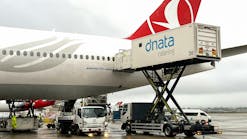There’s good news in the commercial aviation industry. Passengers are returning to air travel.
While figures are still lagging behind pre-pandemic levels established in 2019, airline seats scheduled in May 2021 were up 92% from the same month the previous year, according to OAG.
This significant rise in traffic is a welcomed sight for all stakeholders. But if commercial air travel is going to continue to grow, passengers need to be certain travel is safe. So, all sectors of the industry have taken steps to demonstrate safety.
According to the 2020 SITA Air Transport IT Insights report, airlines and airports have an increased interest in adopting new technologies to overcome the challenges posed by the COVID-19 pandemic.
Chief among these technologies is touchless solutions that assist in automating passenger processing. And, as the topic of digital health passports garners attention, investments in cybersecurity and reliable cloud services is also important.
“Biometric technology is the focus for airport investment with 64 percent of airports aiming to roll out self-boarding gates using biometric and ID documentation by 2023, three times as many as in 2020. Airlines have doubled implementations and plan to double investment for self-boarding using biometric and ID documentation by 2023 (82 percent),” according to SITA’s summary of the report.
What’s more, ground service providers may be impacted by additional technology investments as airlines and airports show a significant interest in enabling self-bag drop capabilities and implementing mobile delayed baggage reporting systems.
According to SITA’s report summary, nearly 75 percent of airlines and airports “will continue to invest in data exchange, cloud services, cybersecurity and business intelligence to accelerate their digital airport processes.”
Commercial aviation is complex with many moving pieces working in concert with one another. But so much of the industry boils down to customer service. As the airlines and airports work to satisfy their customers, the ground handling industry needs to ensure it is ready and able to assist its own customers – the airlines and airports.
The ground handling entities that embrace this digital shift, adopt new technologies themselves and achieve better efficiencies will be best positioned to earn new contracts for years to come.





